 |
 |
 |
| |
Discovery of GS-9770 - a Novel, Unboosted, Once Daily Oral HIV-Protease Inhibitor
|
| |
| |
CROI 2024 March 3-6 Denver
Xiaochun Han*; Ron Aoyama; Jacob Cha; Aesop Cho; Ana Z Gonzalez; Salman Jabri; Michael Lee; Albert C. Liclican; Ryan McFadden; Andrew Mulato; Zach E. Newby; Jie Xu; Johannes Voigt; Lianhong Xu; Hong Yang
Gilead Sciences, Inc., Foster City, CA
Abstract
HIV protease was one of the first biochemical targets identified to inhibit HIV replication. Nine HIV-protease inhibitors (PIs) have been approved since the first, saquinavir, in 1995. The latest generation showing high efficacy and barrier to resistance. However, these agents have poor metabolic stability and a short human half-life on their own. As a result, HIV-PIs need to be
co-administered with a CYP-inhibitor or pharmacokinetic (PK) booster, such as Cobicistat, to extend their half-life long enough to achieve daily oral dosing, hampering their broad utility.
To meet this need, it was our goal to discover a novel HIV-PI that could be administered without the need of a PK booster. Attributing the poor metabolic stability of known HIV protease inhibitors to their peptidomimetic nature and inspired by the guanidine scaffold which was used in the discovery of non-peptidomimetic, and unboosted, β-secretase 1 (BACE1) inhibitors, we selected an iminohydantoin pharmacophore to initiate a structure-enabled optimization to GS-9770.
GS-9770 is exquisitely potent (Ki = 0.14 nM, EC50 = 7 nM) and metabolically stable (3H hLM pred CL = 0.09 L/h/kg). Pre-clinical in vivo PK studies showed that GS-9770 had good oral bioavailability (46 - 100 %) and long half-life (7 - 12 hours).
Both in vitro and in vivo data of GS-9770 support its unboosted, once daily oral administration. This poster will walk audience through our medicinal chemistry efforts with structure-based drug design approach towards GS-9770
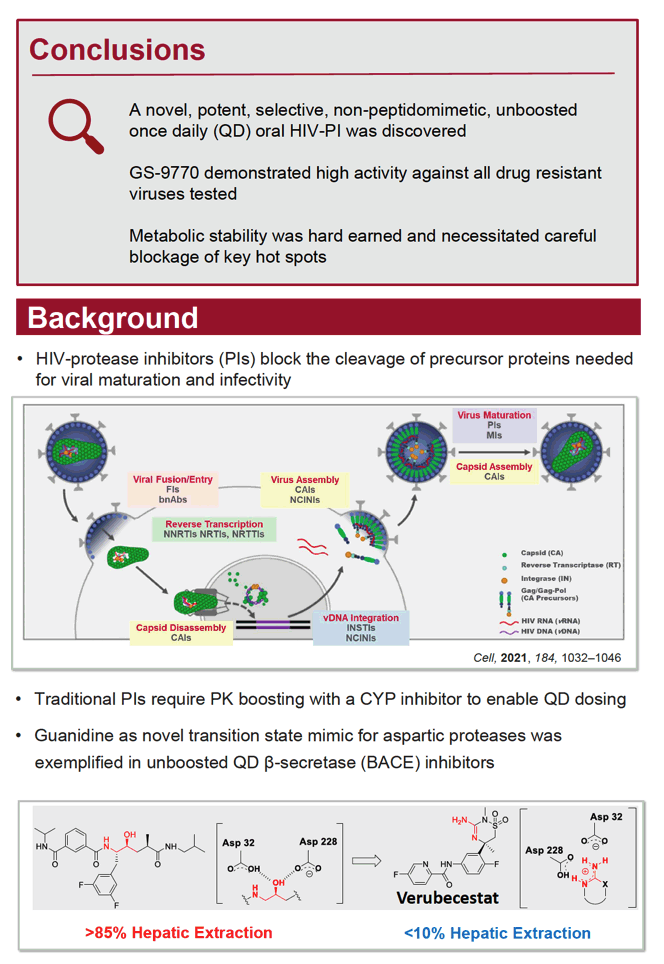
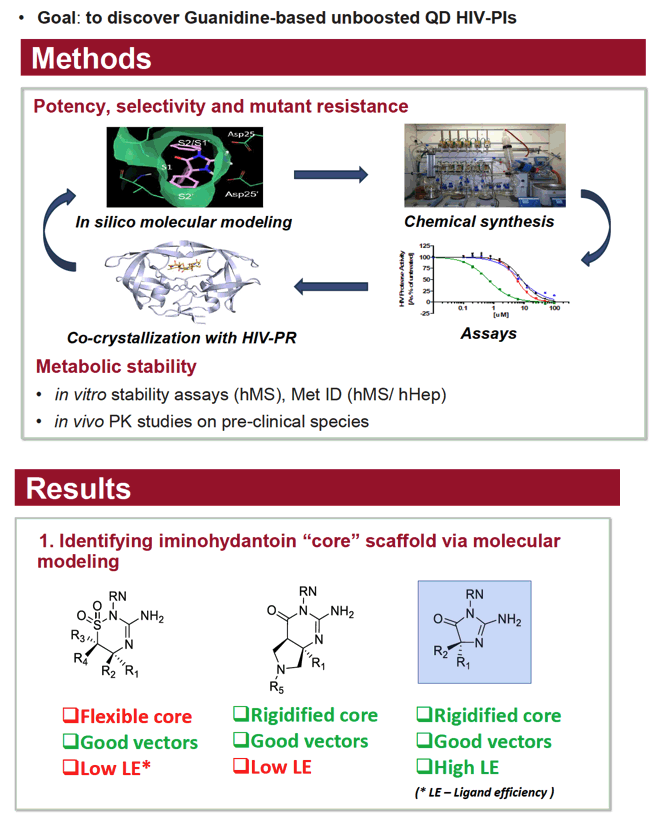
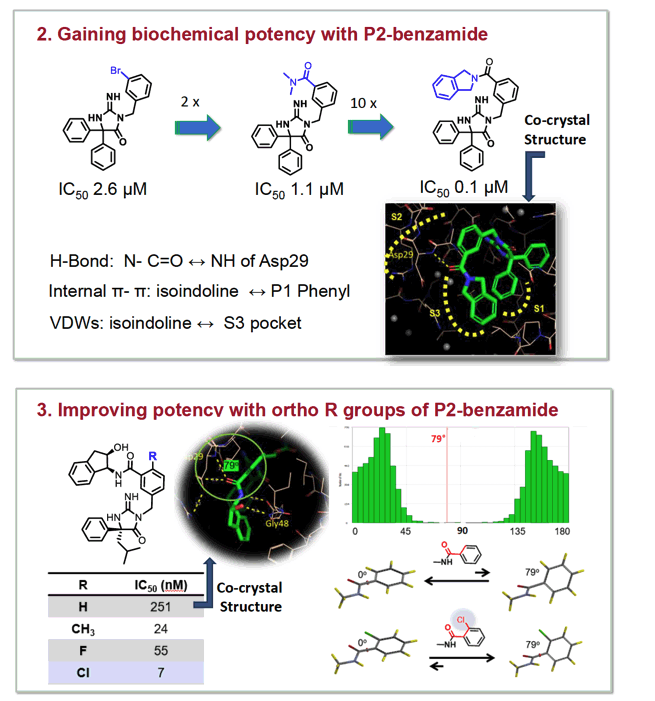
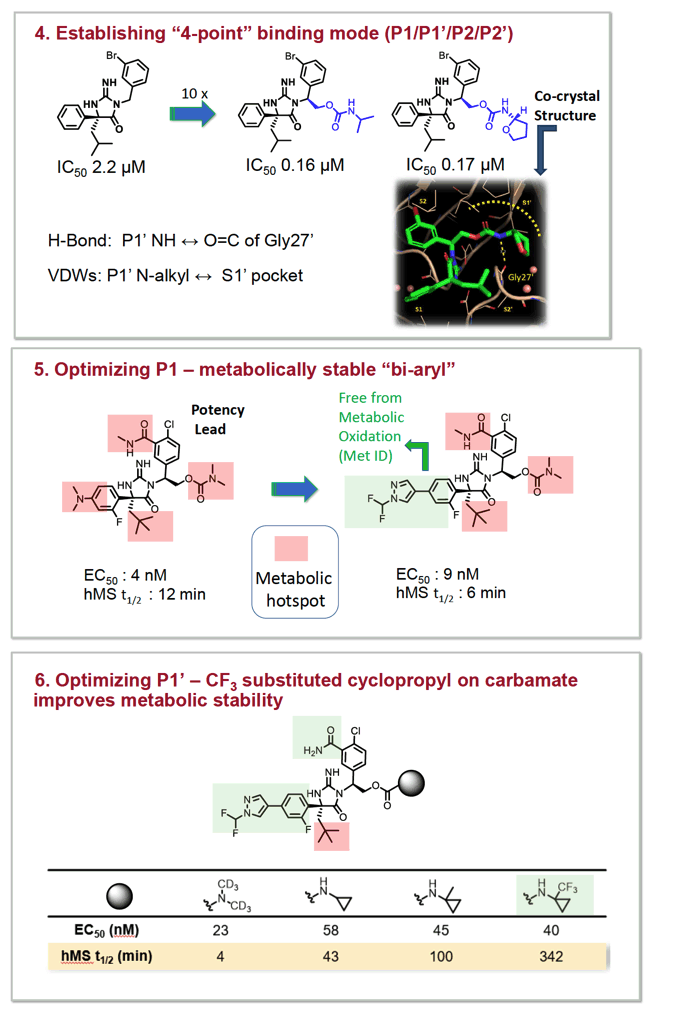
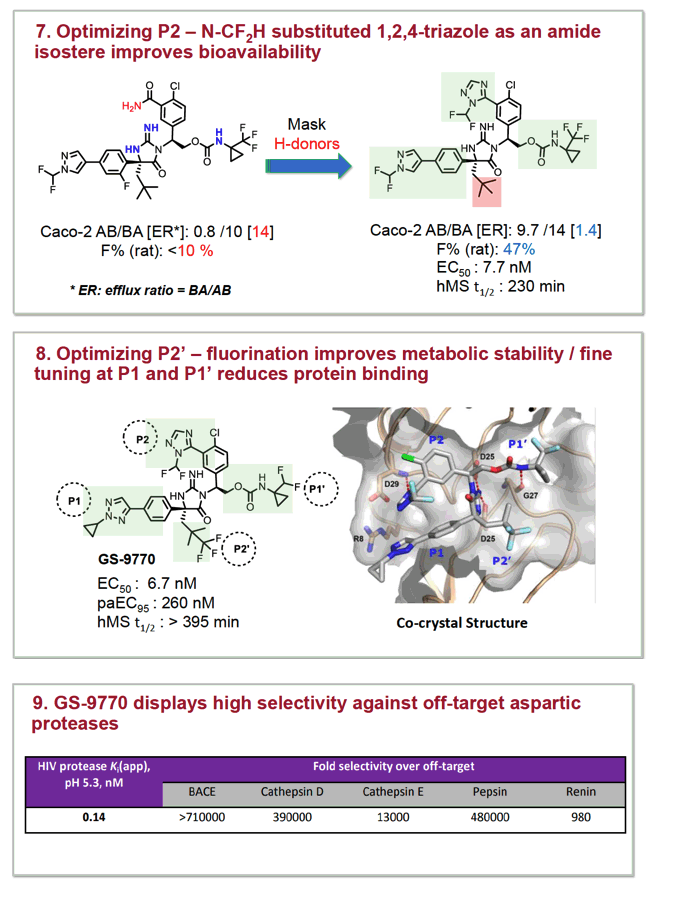
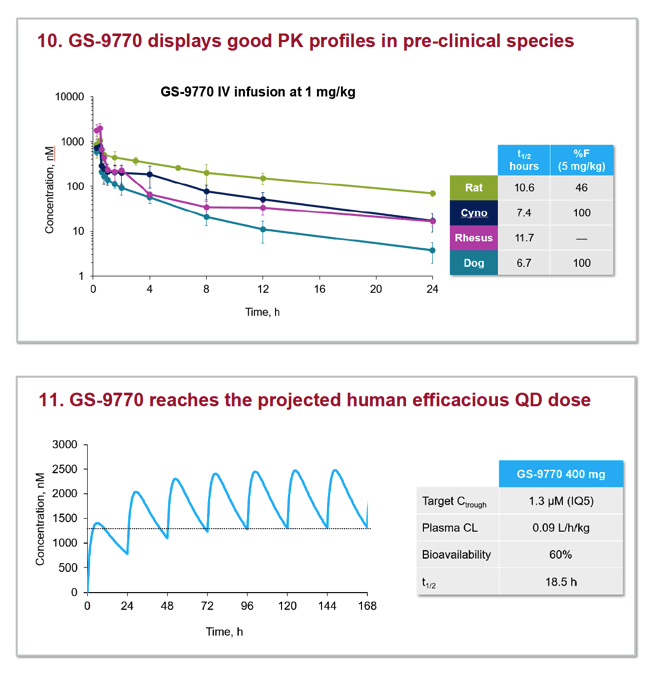
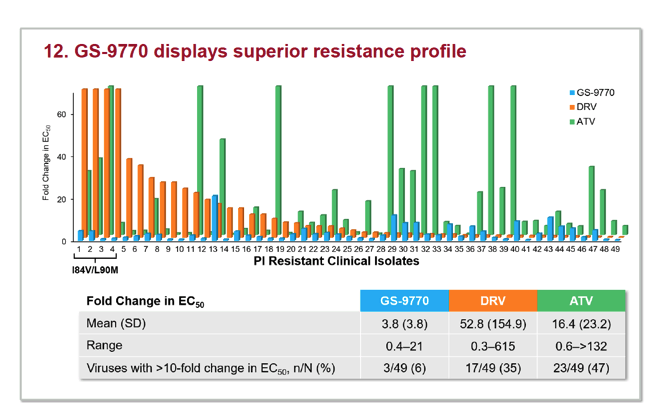
|
| |
|
 |
 |
|
|